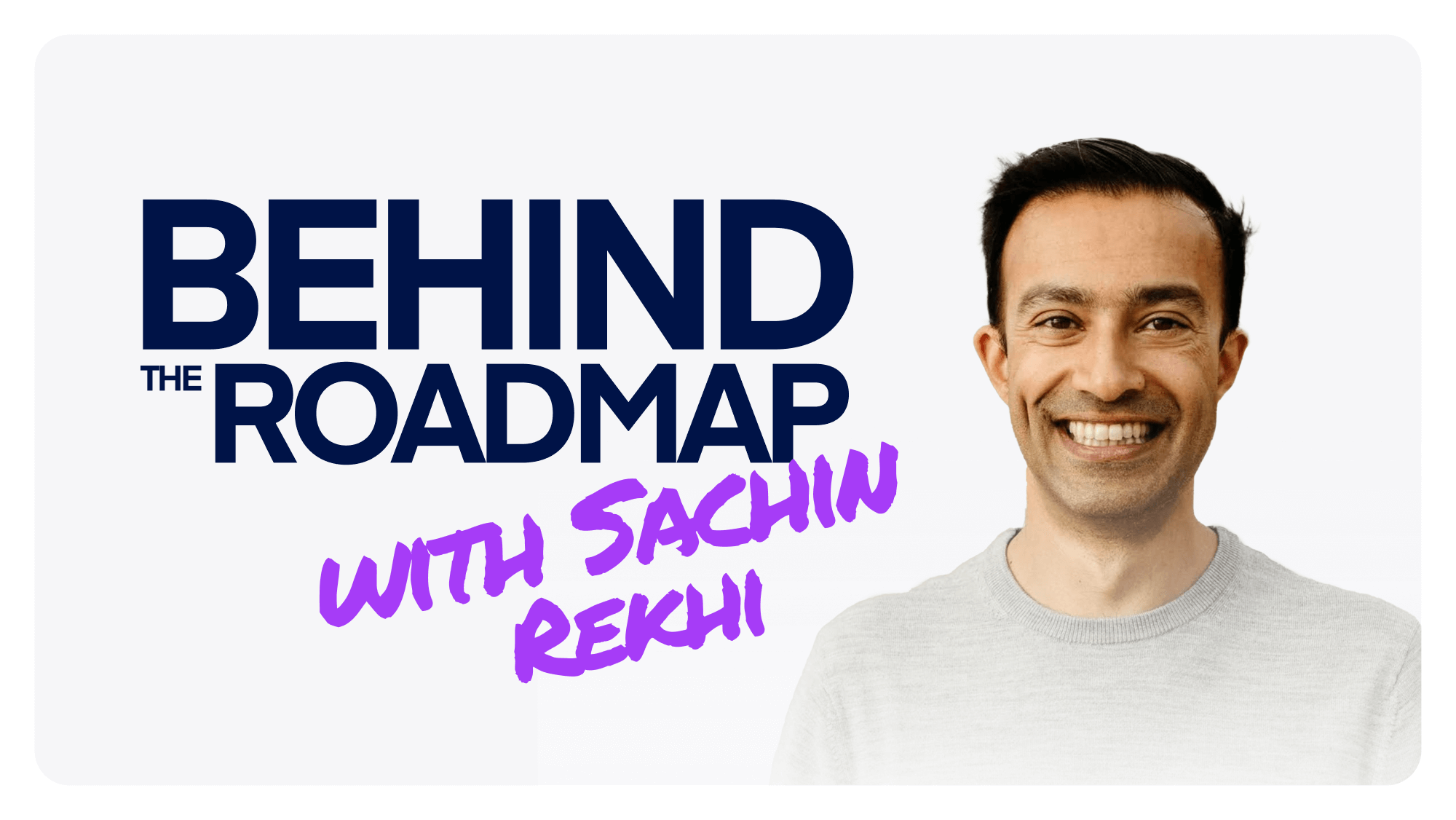Behind the Roadmap with Sachin Rekhi

Product Management & Innovation: A Conversation with Sachin Rekhi
Editor’s note: This post is part of an ongoing video series to understand what goes on behind the roadmap – it’s an inside look at the life of product managers. Find the full playlist here, and keep an eye out for upcoming installments!
There’s greater interest in the world of product management, but it can still feel nebulous to many. That’s why we created our new series, “Behind the Roadmap,” to give you an inside look into product management — told to you directly from incredible product managers.
We spoke with Sachin Rekhi — the founder and CEO of Notejoy, as well as the previous Head of Product for LinkedIn Sales Navigator — about what inspires him, his product management methodology, and his advice for budding product managers. You can watch the video here or keep reading for the top takeaways:
Find inspiration with Sachin’s favorite books and routines
Product management is all about finding ways to inject new ideas into your products or services, and Sachin finds a lot of his inspiration from books. In particular, he calls out three exceptional reads for any product manager:
- The Creative Act by Rick Rubin, which goes into how to develop “taste” as product designers and why you should review the greatest works and products for ideas
- Creative Selection by Ken Kocienda, which talks about the creation of the keyboard for the early iPhone, and also serves as a good reminder that creating innovation is always a messy process of trial and error
- The Everything Store by Brad Stone, which looks at Amazon and how their processes can act as a primer on product strategy
Additionally, Sachin will spend each morning staying on top of industry and tech news, looking at dashboards to get a snapshot of how Notejoy is doing, and reviewing aggregate feedback that came directly from customers. In this way, Sachin can gather the information and context he needs to make impactful product decisions throughout the rest of his day.
Evolve your product methodology
The lean startup methodology is a well-known approach to product management invented almost a decade ago. It’s a helpful framework to help people think about how to bring new products to market from scratch, but it’s not without its shortcomings:
- It’s focused on rapid experimentation instead of starting with a compelling strategy
- It centers around minimum viable products, which can lead to failing too fast
- It overemphasizes product instead of deliberate growth (or how to balance the two)
As a result, Sachin developed an evolution of the lean startup approach that he calls the deliberate startup methodology. It’s designed to address some of the weak spots of the lean startup methodology by doing the following:
- Starting with a hypothesis. You should have an idea of what you want your strategy to be right at the beginning so that you can test it out as you build your product.
- Encouraging other validation techniques besides minimum viable product. By developing prototypes or presales, you can get valuable information to validate your idea before actually building the minimum viable product.
- Focusing on deliberate growth. Instead of only worrying about building a product, you also think about how to get those early users from day one, as well as how to then scale to a much larger audience.
Try applying Sachin’s deliberate startup methodology to your own product management processes to help you deliver more effective results.
Take your product management to the next level
In light of the recent economic climate, Sachin points out that it’s no longer good enough to build a product that adds value. With everyone so fixated on cutting costs and getting a strong return on investment, you need to be able to address the financial aspect as well.
For example, Notejoy has decided to change its pricing and packaging policies to create more affordable bundles for customers. What can you do with your own product pricing to still bring value, but also potentially help your customers save costs in the long run?
And if you’re a product manager who’s looking for your next step, Sachin has a key piece of advice: Look for companies that are growing quickly. With faster growth comes more opportunities for you to further evolve your own career.
Will you be ready for the next big thing?
The final lesson Sachin imparts is that it’s really hard to predict what the next big technology platform will be. We saw crypto come and go, and now there’s a ton of buzz around AI (and more specifically, generative AI). To know what’ll stick, you’ll want to look at how technology can solve real customer problems.
That’s why we launched Productboard AI — we looked at the challenges customers were facing, and have been building our intelligent platform for over a year to revolutionize the world of product management. Be sure to join our AI beta to get started.




